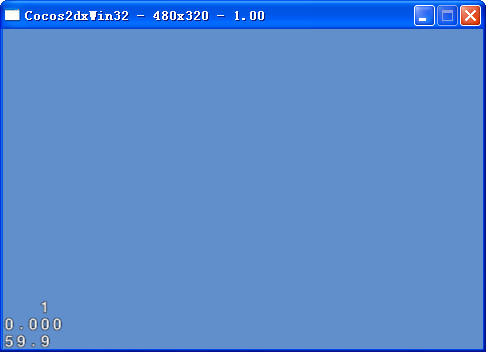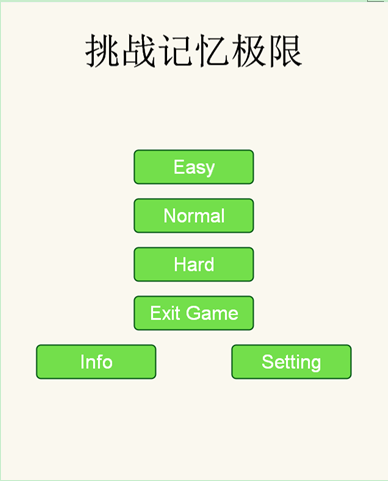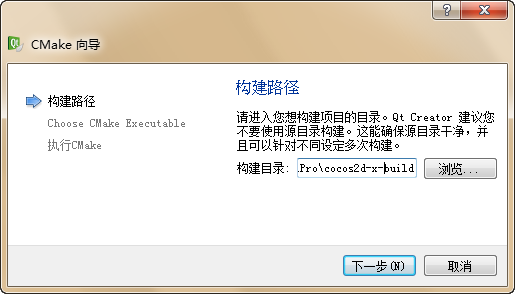一、游戏主循环
在介绍游戏基本概念的时候,我们曾介绍了场景、层、精灵等游戏元素,但我们却故意避开了另一个同样重要的概念,那就是游戏主循环,这是因为 Cocos2d 已经为我们隐藏了游戏主循环的实现。读者一定会对主循环的作用有疑问,为了解答这个问题,我们首先来讨论游戏实现的原理。
游戏乃至图形界面的本质是不断地绘图,然而绘图并不是随意的,任何游戏都需要遵循一定的规则来呈现出来,这些规则就体现为游戏逻辑。游戏逻辑会控制游戏内容,使其根据用户输入和时间流逝而改变。因此,游戏可以抽象为不断地重复以下动作:
1 处理用户输入
2 处理定时事件
3 绘图
游戏主循环就是这样的一个循环,它会反复执行以上动作,保持游戏进行下去,直到玩家退出游戏。在 Cocos2d 中,以上的动作包含在 CCDirector 的某个方法之中,而引擎会根据不同的平台设法使系统不断地调用这个方法,从而完成了游戏主循环。
现在我们回到 Cocos2d-x 游戏主循环的话题上来。上面介绍了 CCDirector 包含一个管理引擎逻辑的方法,它就是CCDirector::mainLoop()方法,这个方法负责调用定时器,绘图,发送全局通知,并处理内存回收池。该方法按帧调用,每帧调用一次,而帧间间隔取决于两个因素,一个是预设的帧率,默认为 60 帧每秒;另一个是每帧的计算量大小。当逻辑处理与绘图计算量过大时,设备无法完成每秒 60 次绘制,此时帧率就会降低。
mainLoop()方法会被定时调用,然而在不同的平台下它的调用者不同。通常 CCApplication 类负责处理平台相关的任务,其中就包含了对 mainLoop()的调用。有兴趣的读者可以对比 Android、iOS 与 Windows Phone 三个平台下不同的实现,平台相关的代码位于引擎的"platform"目录。
mainLoop()方法是定义在 CCDirector 中的抽象方法,它的实现位于同一个文件中的 CCDisplayLinkDirector 类。现在我们来看一下它的代码:
void CCDisplayLinkDirector::mainLoop()
{
if (m_bPurgeDirecotorInNextLoop)
{
m_bPurgeDirecotorInNextLoop = false;
purgeDirector();
}
else if (! m_bInvalid)
{
drawScene();
//释放对象
CCPoolManager::sharedPoolManager()->pop();
}
}
上述代码主要包含如下 3 个步骤。
1判断是否需要释放 CCDirector,如果需要,则删除 CCDirector 占用的资源。通常,游戏结束时才会执行这个步骤。
2调用 drawScene()方法,绘制当前场景并进行其他必要的处理。
3弹出自动回收池,使得这一帧被放入自动回收池的对象全部释放。
由此可见,mainLoop()把内存管理以外的操作都交给了 drawScene()方法,因此关键的步骤都在 drawScene()方法之中。下面是 drawScene()方法的实现:
void
CCDirector::drawScene()
{
计算全局帧间时间差 dt
calculateDeltaTime();
if (!
m_bPaused)
{
m_pScheduler->
update(m_fDeltaTime);
}
glClear(GL_COLOR_BUFFER_BIT |
GL_DEPTH_BUFFER_BIT);
if (m_pNextScene)
{
setNextScene();
}
kmGLPushMatrix();
绘制场景
if (m_pRunningScene)
{
m_pRunningScene->
visit();
}
处理通知节点
if (m_pNotificationNode)
{
m_pNotificationNode->
visit();
}
if (m_bDisplayStats)
{
showStats();
}
if (m_pWatcherFun &&
m_pWatcherSender)
{
(*
m_pWatcherFun)(m_pWatcherSender);
}
kmGLPopMatrix();
m_uTotalFrames++
;
交换缓冲区
if (m_pobOpenGLView)
{
m_pobOpenGLView->
swapBuffers();
}
if (m_bDisplayStats)
{
calculateMPF();
}
}
我们看到 drawScene()方法内进行了许多操作,甚至包含了少量 OpenGL 函数。这是由于 Cocos2d-x 在游戏主循环中对引擎的细节进行了许多处理,我们并不关心这些细节,因此我们首先剔除掉细枝末节,整理出一个精简版本的drawScene()方法:
void
CCDirector::drawSceneSimplified()
{
_calculate_time();
if (!
m_bPaused)
m_pScheduler->
update(m_fDeltaTime);
if (m_pNextScene)
setNextScene();
_deal_with_opengl();
if (m_pRunningScene)
m_pRunningScene->
visit();
_do_other_things();
}
对比一下 drawSceneSimplified()与 drawScene()的代码,可以发现我们省略掉的代码主要用于处理 OpenGL 和一些细节,如计算 FPS、帧间时间差等。在主循环中,我们主要进行了以下 3 个操作。
1 调用了定时调度器的 update 方法,引发定时器事件。
2 如果场景需要被切换,则调用 setNextStage 方法,在显示场景前切换场景。
3 调用当前场景的visit 方法,绘制当前场景。
场景的绘制与 OpenGL 密切相关,后面详细讨论
二、定时器事件
(1)在游戏主循环 drawScene 方法中,我们可以看到每一帧引擎都会调用 m_pScheduler 的 update 方法。m_pScheduler 是 CCScheduler 类型的对象,是一个定时调度器。所谓定时调度器,就是一个管理所有节点定时器的对象,它负责记录定时器,并在合适的时间触发定时事件。接下来我们详细介绍定时调度器。
从 CCNode 说起
前面我们简要介绍了游戏主循环,并在 Cocos2d-x 的游戏主循环中引出了定时调度器 CCScheduler 的调度方法 update。update 方法主要负责定时器的调度,我们将对它进行详细分析,但在此之前,了解 CCScheduler 公开的接口是很有必要的,这会有助于我们对调度器类有一个整体的认识。因此,我们从 CCNode 的定时器接口开始分析。Cocos2d-x 提供了两种定时器,分别是:
update 定时器,每一帧都被触发,使用 scheduleUpdate 方法来启用;
schedule 定时器,可以设置触发的间隔,使用 schedule 方法来启用。
下面就是这两个方法的代码:
void CCNode::scheduleUpdateWithPriority(
int priority)
{
m_pScheduler->scheduleUpdateForTarget(
this,priority,!
m_bIsRunning);
}
void CCNode::schedule(SEL_SCHEDULE selector,
float interval,unsigned
int repeat,255); line-height:1.5!important">float
delay)
{
CCAssert( selector,"Argument must be non-nil");
CCAssert( interval >=
0,
Argument must be positive");
m_pScheduler->scheduleSelector(selector,interval,!
m_bIsRunning,repeat,delay);
}
其中 m_pScheduler 是 CCScheduler 对象。可以看到,这两个方法的内部除去检查参数是否合法,只是调用了 CCScheduler提供的方法。换句话说,CCNode 提供的定时器只是对 CCScheduler 的包装而已。不仅这两个方法如此,其他定时器相关的方法也都是这样。这里没有必要列出所有的代码,富有探索精神的读者可以打开 CCNode 的源代码。
经过上面的分析,我们已经知道CCNode 提供的定时器不是由它本身而是由 CCScheduler 管理的。因此,我们把注意力转移到定时调度器上。显而易见,定时调度器应该对每一个节点维护一个定时器列表,在恰当的时候就会触发其定时事件。打开 CCScheduler 类的头文件,可以看到它主要包含的成员。
为了注册一个定时器,开发者只要调用调度器提供的方法即可。同时调度器还提供了一系列对定时器的控制接口,例如暂停和恢复定时器。在调度器内部维护了多个容器,用于记录每个节点注册的定时器;同时,调度器会接受其他组件(通常与平台相关,例如在 iOS 下为 CADisplayLink)的定时调用,随着系统时间的改变驱动调度器。
调度器可以随时增删或修改被注册的定时器。具体来看,调度器将 update 定时器与普通定时器分别处理:当某个节点注册update 定时器时,调度器就会把节点添加到 Updates 容器中,为了提高调度器效率,Cocos2d-x 使用了散列表与链表结合的方式来保存定时器信息;当某个节点注册普通定时器时,调度器会把回调函数和其他信息保存到 Selectors 散列表中。
(2)update 方法
在游戏主循环中,我们已经见到了 update 方法。可以看到,游戏主循环会不停地调用 update 方法。该方法包含一个实型参数,表示两次调用的时间间隔。在该方法中,引擎会利用两次调用的间隔来计算何时触发定时器。
update 方法的实现看起来较为复杂,而实际上它的内部多是重复的代码片段,逻辑并不复杂。我们可以利用 Cocos2d-x 中精心编写的注释来帮助理解 update 方法的工作流程,相关代码如下:
main loop
void CCScheduler::update(
float dt)
{
m_bUpdateHashLocked =
true;
if (m_fTimeScale !=
1.0f)
{
dt *=
m_fTimeScale;
}
Iterate over all the Updates' selectors
tListEntry *pEntry,*
pTmp;
updates with priority < 0
DL_FOREACH_SAFE(m_pUpdatesNegList,pEntry,pTmp)
{
if ((! pEntry->paused) && (! pEntry->
markedForDeletion))
{
pEntry->target->
update(dt);
}
}
updates with priority == 0
DL_FOREACH_SAFE(m_pUpdates0List,255); line-height:1.5!important">if ((! pEntry->paused) && (! pEntry->
markedForDeletion))
{
CCScriptEngineProtocol* pEngine = CCScriptEngineManager::sharedManager()->
getScriptEngine();
if (pEngine != NULL && kScriptTypeJavascript == pEngine->
getScriptType())
{
CCScriptEngineManager::sharedManager()->getScriptEngine()->executeSchedule(NULL,dt,(CCNode *)pEntry->
target);
}
pEntry->target->
update(dt);
}
}
updates with priority > 0
DL_FOREACH_SAFE(m_pUpdatesPosList,255); line-height:1.5!important">if ((! pEntry->paused) && (! pEntry->
markedForDeletion))
{
pEntry->target->
update(dt);
}
}
Iterate over all the custom selectors
for (tHashSelectorEntry *elt = m_pHashForSelectors; elt !=
NULL; )
{
m_pCurrentTarget =
elt;
m_bCurrentTargetSalvaged =
false;
if (! m_pCurrentTarget->
paused)
{
The 'timers' array may change while inside this loop
for (elt->timerIndex =
0; elt->timerIndex < elt->timers->num; ++(elt->
timerIndex))
{
elt->currentTimer = (CCTimer*)(elt->timers->arr[elt->
timerIndex]);
elt->currentTimerSalvaged =
false;
elt->currentTimer->
update(dt);
if (elt->
currentTimerSalvaged)
{
The currentTimer told the remove itself. To prevent the timer from
accidentally deallocating itself before finishing its step,we retained
it. Now that step is done,it's safe to release it.
elt->currentTimer->
release();
}
elt->currentTimer =
NULL;
}
}
elt,at this moment,is still valid
so it is safe to ask this here (issue #490)
elt = (tHashSelectorEntry *)elt->
hh.next;
only delete currentTarget if no actions were scheduled during the cycle (issue #481)
if (m_bCurrentTargetSalvaged && m_pCurrentTarget->timers->num ==
0)
{
removeHashElement(m_pCurrentTarget);
}
}
Iterate over all the script callbacks
if (m_pScriptHandlerEntries)
{
for (
int i = m_pScriptHandlerEntries->count() -
1; i >=
0; i--
)
{
CCSchedulerScriptHandlerEntry* pEntry = static_cast<CCSchedulerScriptHandlerEntry*>(m_pScriptHandlerEntries->
objectAtIndex(i));
if (pEntry->
isMarkedForDeletion())
{
m_pScriptHandlerEntries->
removeObjectAtIndex(i);
}
if (!pEntry->
isPaused())
{
pEntry->getTimer()->
update(dt);
}
}
}
delete all updates that are marked for deletion
if (pEntry->
markedForDeletion)
{
this->
removeUpdateFromHash(pEntry);
}
}
this->
removeUpdateFromHash(pEntry);
}
}
m_bUpdateHashLocked =
false;
m_pCurrentTarget =
NULL;
}
借助注释,能够看出 update 方法的流程大致如下所示。
1参数 dt 乘以一个缩放系数,以改变游戏全局的速度,其中缩放系数可以由 CCScheduler 的 TimeScale 属性设置。
2分别枚举优先级小于 0、等于 0、大于 0 的 update 定时器。如果定时器没有暂停,也没有被标记为即将删除,则触发定时器。
3枚举所有注册过普通定时器的节点,再枚举该节点的定时器,调用定时器的更新方法,从而决定是否触发该定时器。
4我们暂不关心脚本引擎相关的处理。
5再次枚举优先级小于 0、等于 0、大于 0 的 update 定时器,移除前几个步骤中被标记了删除记号的定时器。
(3)对于 update 定时器来说,每一节点只可能注册一个定时器,因此调度器中存储定时器数据的结构体_listEntry 主要保存了
注册者与优先级。对于普通定时器来说,每一个节点可以注册多个定时器,引擎使用回调函数(选择器)来区分同一节点下注册的不同定时器。调度器为每一个定时器创建了一个 CCTimer 对象,它记录了定时器的目标、回调函数、触发周期、重复触发还是仅触发一次等属性。
CCTimer 也提供了 update 方法,它的名字和参数都与 CCScheduler 的 update 方法一样,而且它们也都需要被定时调用。不同的是,CCTimer 的 update 方法会把每一次调用时接收的时间间隔 dt 积累下来,如果经历的时间达到了周期,就会引发定时器的定时事件。第一次引发了定时事件后,如果是仅触发一次的定时器,则 update 方法会中止,否则定时器会重新计时,从而反复地触发定时事件。
回到 CCScheduler 的 update 方法上来。在步骤 c 中,程序首先枚举了每一个注册过定时器的对象,然后再枚举对象中定时器对应的 CCTimer 对象,调用 CCTimer 对象的 update 方法来更新定时器状态,以便触发定时事件。
至此,我们可以看到事件驱动的普通定时器调用顺序为:系统的时间事件驱动游戏主循环,游戏主循环调用 CCScheduler的 update 方法,CCScheduler 调用普通定时器对应的 CCTimer 对象的 update 方法,CCTimer 类的 update 方法调用定时器对应的回调函数。对于 update 定时器,调用顺序更为简单,因此前面仅列出了普通定时器的调用顺序。
同时,我们也可以看到,在定时器被触发的时刻,CCScheduler 类的 update 方法正在迭代之中,开发者完全可能在定时器事件中启用或停止其他定时器(如下图)。不过,这么做会导致 update 方法中的迭代被破坏。Cocos2d-x 的设计已经考虑到了这个问题,采用了一些技巧避免迭代被破坏。例如,update 定时器被删除时,不会直接删除,而是标记为将要删除,在定时器迭代完毕后再清理被标记的定时器,这样即可保证迭代的正确性。
(4)使用实例
在vs2010中新建cocos2d-x的工程项目,命名为Helloworld。
HelloWorldScene.h
#ifndef __HELLOWORLD_SCENE_H__
#define __HELLOWORLD_SCENE_H__
#include cocos2d.h"
#include SimpleAudioEngine.h"
class HelloWorld :
public cocos2d::CCLayer
{
public:
Here's a difference. Method 'init' in cocos2d-x returns bool,instead of returning 'id' in cocos2d-iphone
//
virtual bool init();
void log(float dt); 注意参数类型
void update(
float dt);
there's no 'id' in cpp,so we recommand to return the exactly class pointer
static cocos2d::CCScene*
scene();
a selector callback
void menuCloseCallback(CCObject*
pSender);
implement the "static node()" method manually
CREATE_FUNC(HelloWorld);
};
#endif __HELLOWORLD_SCENE_H__
HelloWorldScene.cpp
#include
HelloWorldScene.husing namespace cocos2d;
CCScene*
HelloWorld::scene()
{
CCScene * scene =
NULL;
do
{
'scene' is an autorelease object
scene =
CCScene::create();
CC_BREAK_IF(!
scene);
'layer' is an autorelease object 创建层
HelloWorld *layer =
HelloWorld::create();
CC_BREAK_IF(!
layer);
add layer as a child to scene
scene->
addChild(layer);
} while (
0);
return the scene
return scene;
}
update函数,首字母小写
void HelloWorld::update(
float dt)
{
CCLog(schedule");
}
定时器
/*void HelloWorld::log(float dt)
{
CCLog("schedule");
} */
on "init" you need to initialize your instance
bool HelloWorld::init()
{
bool bRet =
false;
do
{
//////////////////////////////////////////////////////////////////////////
super init first对父类进行初始化
//
CC_BREAK_IF(!
CCLayer::init());
add your codes below...
//
1. Add a menu item with "X" image,which is clicked to quit the program.
Create a "close" menu item with close icon,it's an auto release object.
创建菜单并添加到层
CCMenuItemImage *pCloseItem =
CCMenuItemImage::create(
CloseNormal.png",0); line-height:1.5!important">CloseSelected.pngthis,menu_selector(HelloWorld::menuCloseCallback));
CC_BREAK_IF(!
pCloseItem);
Place the menu item bottom-right conner.
pCloseItem->setPosition(ccp(CCDirector::sharedDirector()->getWinSize().width -
20,128); line-height:1.5!important">20
));
Create a menu with the "close" menu item,it's an auto release object.
CCMenu* pMenu =
CCMenu::create(pCloseItem,NULL);
pMenu->
setPosition(CCPointZero);
CC_BREAK_IF(!
pMenu);
Add the menu to HelloWorld layer as a child layer.
this->addChild(pMenu,128); line-height:1.5!important">1
);
2. Add a label shows "Hello World".
Create a label and initialize with string "Hello World".
创建标签并添加到层
CCLabelTTF* pLabel = CCLabelTTF::create(
Hello World",0); line-height:1.5!important">Arial
24);
CC_BREAK_IF(!
pLabel);
Get window size and place the label upper.
CCSize size = CCDirector::sharedDirector()->
getWinSize();
pLabel->setPosition(ccp(size.width /
2,size.height -
50));
Add the label to HelloWorld layer as a child layer.
this->addChild(pLabel,0); line-height:1.5!important"> 3. Add add a splash screen,show the cocos2d splash image.
创建精灵并添加到层
CCSprite* pSprite = CCSprite::create(
HelloWorld.png");
CC_BREAK_IF(!
pSprite);
Place the sprite on the center of the screen
pSprite->setPosition(ccp(size.width/
2));
Add the sprite to HelloWorld layer as a child layer.
this->addChild(pSprite,128); line-height:1.5!important">0
);
bRet =
true;
} 开启定时器,延时2s执行,执行3+1次,执行间隔1s
this->schedule(schedule_selector(HelloWorld::log),1,3,2);
update定时器
scheduleUpdate();
return bRet;
}
void HelloWorld::menuCloseCallback(CCObject*
pSender)
{
"close" menu item clicked
CCDirector::sharedDirector()->
end();
}
注:代码中含有update定时器和普通定时器(已注释)两种实例。

 本文实践自 RayWenderlich、Ali Hafizji 的文章《...
本文实践自 RayWenderlich、Ali Hafizji 的文章《... Cocos2d-x是一款强大的基于OpenGLES的跨平台游戏开发...
Cocos2d-x是一款强大的基于OpenGLES的跨平台游戏开发... 1. 来源 QuickV3sample项目中的2048样例游戏,以及最近《...
1. 来源 QuickV3sample项目中的2048样例游戏,以及最近《... Cocos2d-x3.x已经支持使用CMake来进行构建了,这里尝试...
Cocos2d-x3.x已经支持使用CMake来进行构建了,这里尝试...